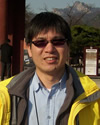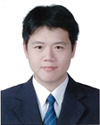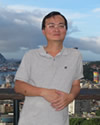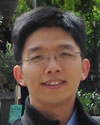ASIAA has always focused on developing forefront technology programs which will drive the next generation of instruments. In our first decade, ASIAA concentrated on establishing a strong research program in radio astronomy. The assembly of a strong team which can develope its expertise in millimeter and submillimeter wavelength technologies has been the driver for the Submillimeter Array (SMA), the Y.T. Lee Array (YTLA, formerly AMiBA), and the Atacama Large Millimeter/submillimeter Array (ALMA) programs. The technical group now has a broad range of capabilities, including superconductor-insulator-superconductor mixers and Superconducting Quantum Interference Device (SQUID) chips, Monolithic Microwave Integrated Circuit (MMIC) devices, IF electronics, cryogenics, correlator, submillimeter wavelength antennas, carbon fiber reflectors, and control software.
In our second decade, ASIAA began to develop a technical group in optical/infrared (OIR) wavelengths. This assembled team has been the driver for the TAOS and CFHT/WIRCam programs. The success of WIRCam collaboration brought the experience of array testing and control electronics to the core expertise of the OIR laboratory. With such expertise, we continue to work on advanced instrumentation project in large telescopes, such as Spectropolarimètre Infra-Rouge (SPIROU) of CFHT and Hyper SuprimeCam (HSC) and Prime Focus Spectrograph (PFS) of Subaru telescope. Negotiation with Japanese space agency JAXA to join the next generation infrared satellite project Space Infrared telescope for Cosmology and Astrophysics (SPICA) is ongoing. In addition, working on the future thirty-meter class telescope instruments is also planned.
The research of instrumentation in ASIAA includes receiver technology development, microwave device design and assembly, superconducting device development, and OIR detector array development. ASIAA will continue to expand on its technical development groups, with the goal of increasing capabilities in detection sensitivity in various domains.















